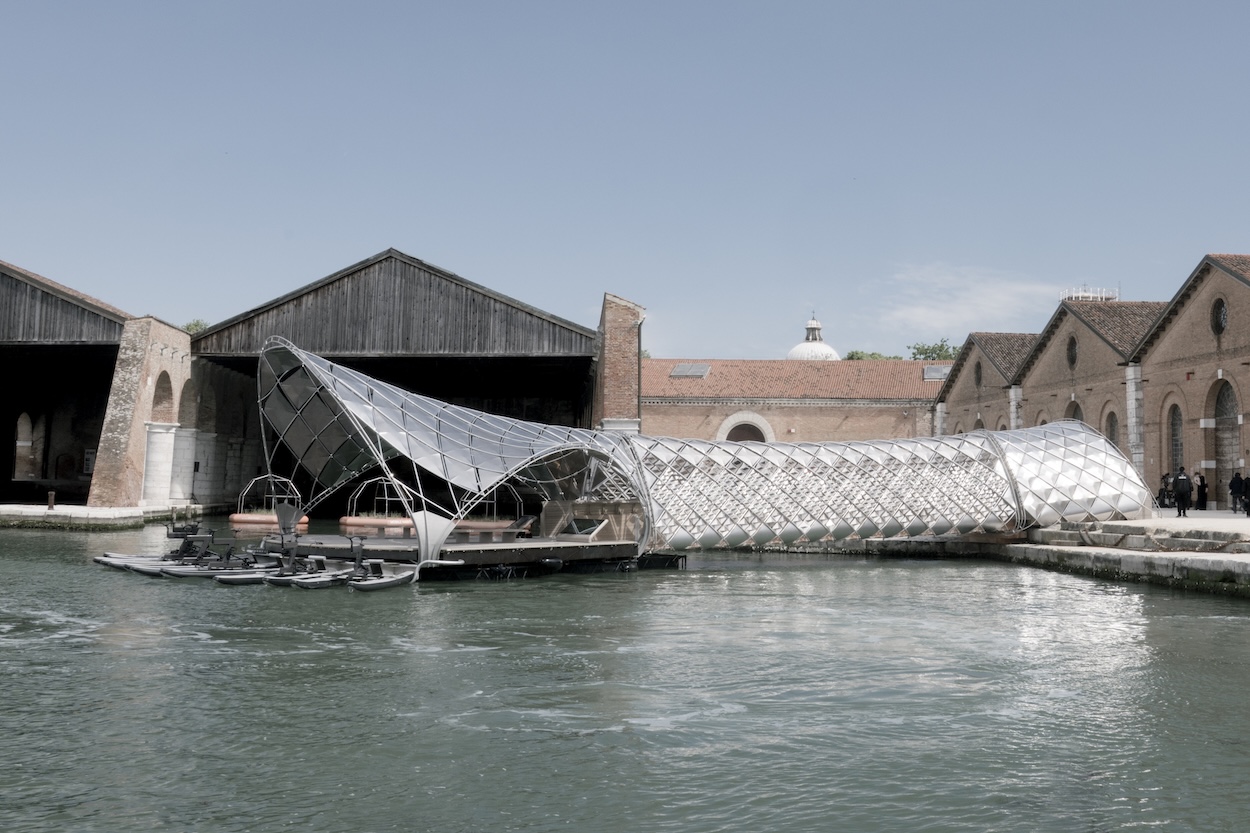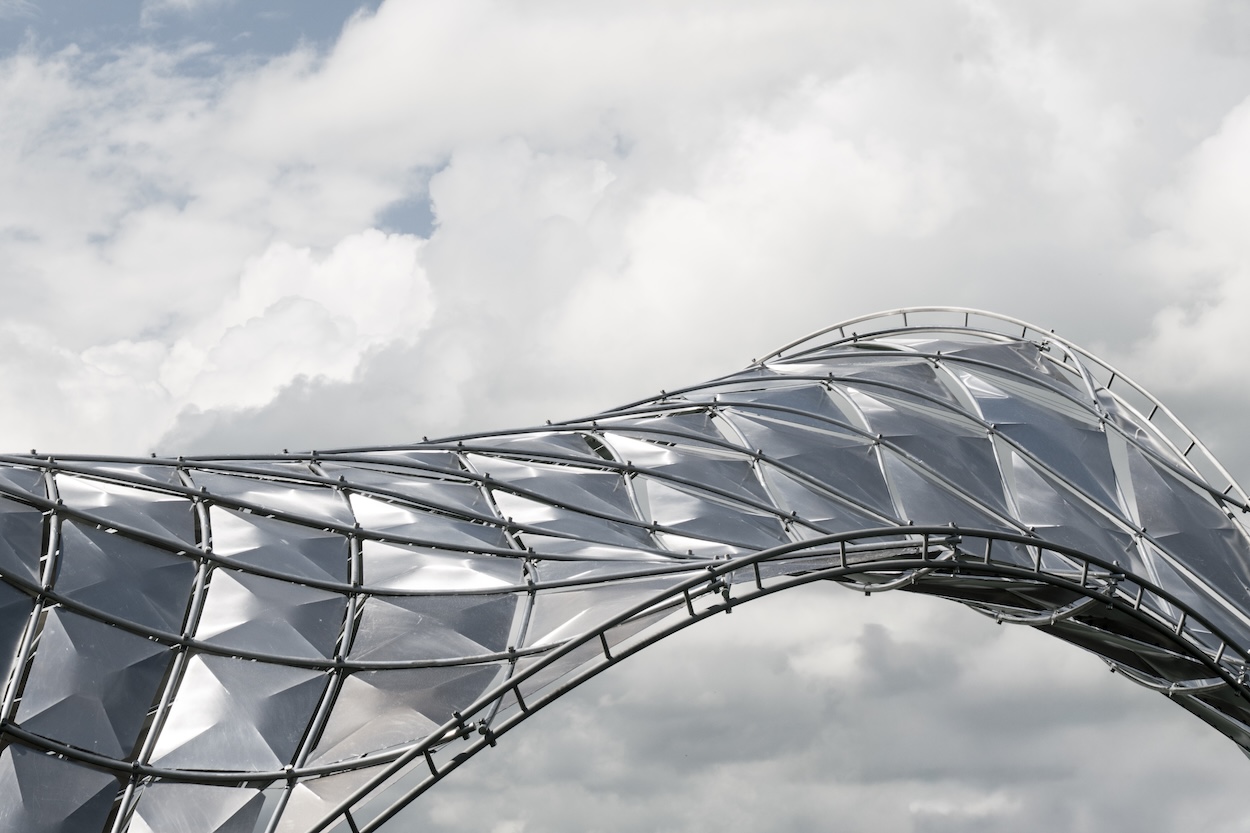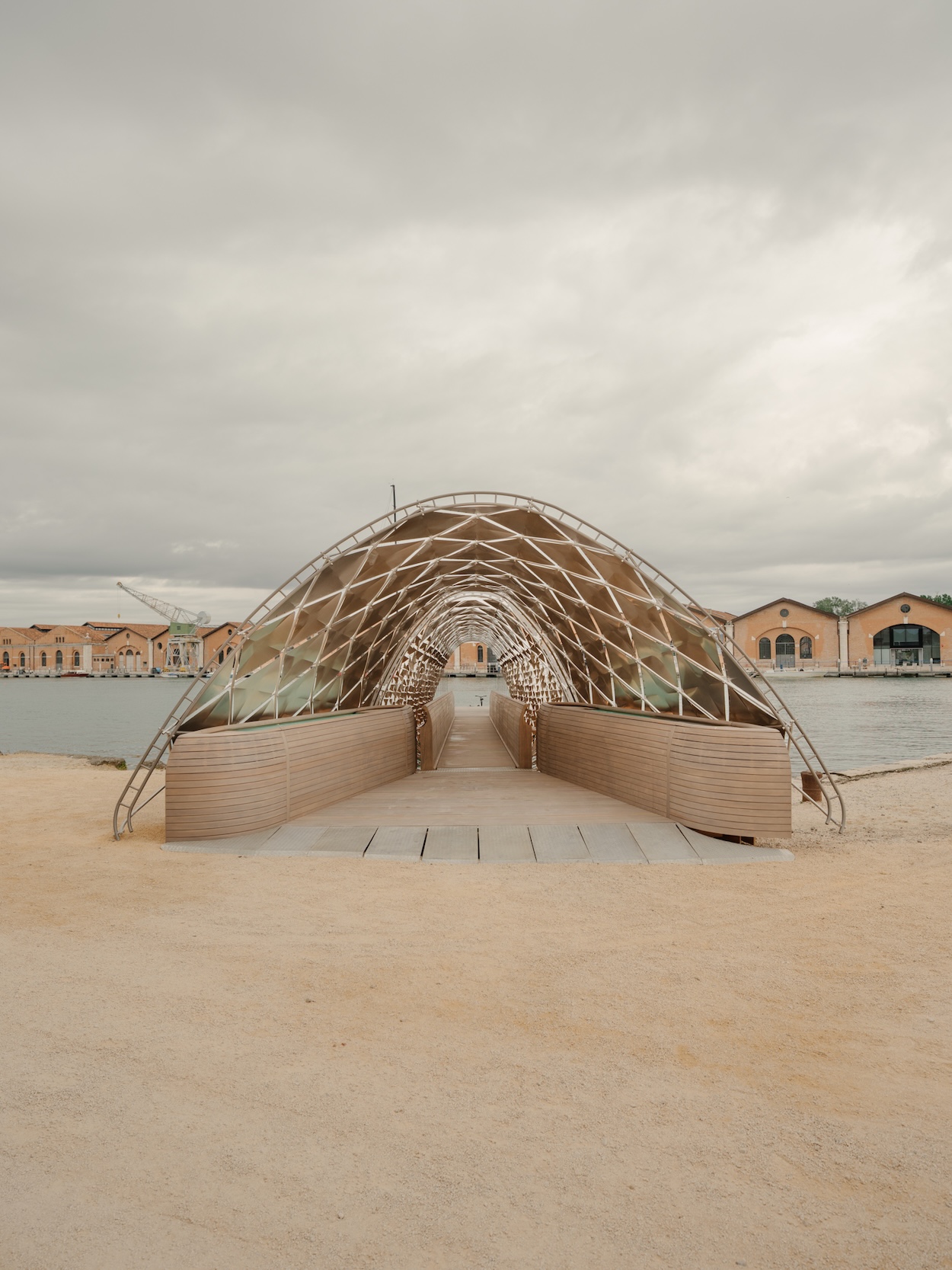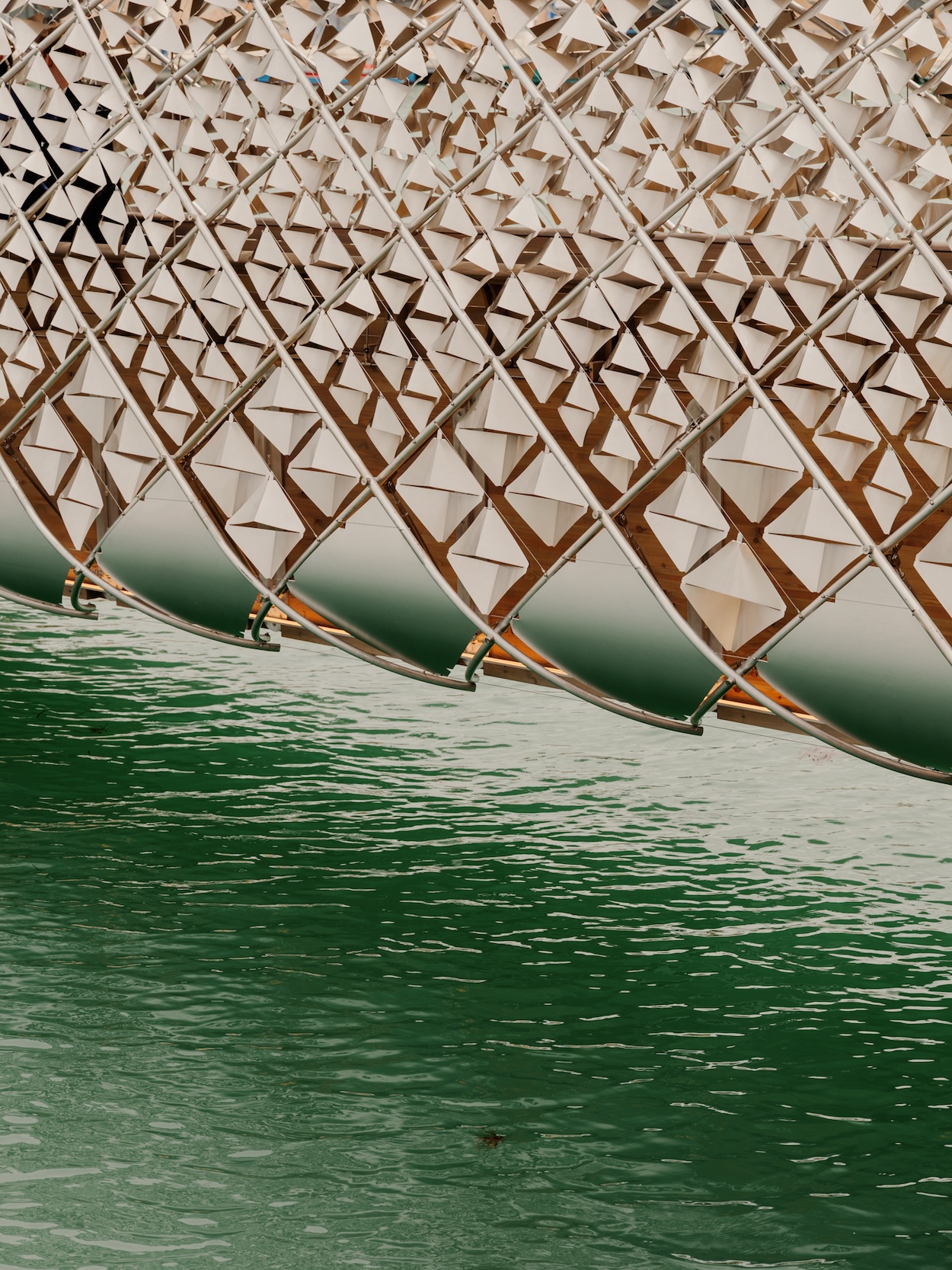It’s early morning and the torrential rains that battered Venice last night have given way to clear skies. Norman Foster, age 89, is out on the Arsenale harbor in full suit and tie pedaling away on a Schiller S1-C water bike. The widely celebrated, awarded, and knighted architect is a fan of the sport and spends hours doing it while in residence at his waterfront homes in Switzerland and Martha’s Vineyard.
Norman Foster’s Water Bikes and Porsche-Inspired Docking Bridge for Venice
At the Biennale Architettura 2025, the leading British architect and German car company are presenting Gateway to Venice’s Waterway, a prototype that reconsiders the city’s public transportation.
BY ADRIAN MADLENER May 19, 2025
It only seems fitting that when Porsche approached Foster to imagine an installation as part of its The Art of Dreams initiative, he chose to explore the topic of sustainable mobility and to debut the result at the 19th Venice Architecture Biennale. Where better to potentially introduce water bikes as a new mode of transportation than in a city of canals.

Stories of being stranded late at night on one of the many islands that make up La Serenissima are common. Conceptually,a waterborne version of the public bicycle sharing programs found in other cities could be implemented here. That obstacle: one would have to navigate the gondolas, vaporettos, private taxis, and cargo vessels that pass through these waters at all hours.
“Dreams were interpreted as aspirations brought to life through design,” Foster said during an opening weekend gala attended by a who’s who of European politicians, cultural figures, and Porsche collectors. “In the context of the Biennale, dreams inspired the reimagining of Venice’s transportation infrastructure, bridging heritage and innovation.”

To anchor the equipment—the Schiller S1-C water bikes—Foster and his eponymously named foundation developed a bridge structure inspired by the pared back, essentialist, yet sinuous contours of various Porsche models. Positioned right off of the embankment that surrounds the Arsenale—one of the Biennale’s main exhibition venues—the 121-foot suspended bridge takes on a zoomorphic shape as it organically contracts and expands to cover the dock. The pier anchors the bikes—available for use throughout the duration of the Biennale—and, during opening weekend in early May, electric propulsion Frauscher x Porsche 850 Fantom airboats, too.
The enclosed bridge is wrapped in a semi-permeable, scale-like skin—reflecting Porsche’s proprietary Kubus pattern—allowing natural light and air to flow through. The outer-shell was constructed in the lightweight metal often used in optimized high-speed sports cars. Vitrines inside showcase student design concepts for sustainable mobility.

“I think it’s extremely important for brands like Porsche to initiate these types of collaborations so that we can look beyond what we normally do and have a fresh perspective on important issues,” Porsche vice president of style Michael Mauer told Surface. “It helps us determine what it is that we stand for. This type of project makes that mission much clearer.”
For him, a lot of thinking Foster and his team put forward about the future of mobility and automotive design were fruitful but are strategies that could perhaps only be implemented in a decade or so. “Regardless, it’s good to have that much foresight and to have chosen to present these ideas in the context of Venice during the Biennale Architettura, especially given this edition’s theme: intelligens: natural. artificial. collective,” Mauer concluded.
